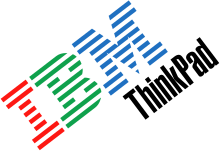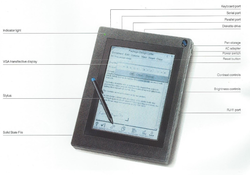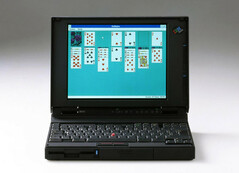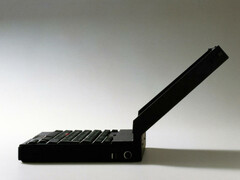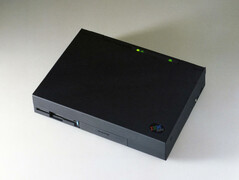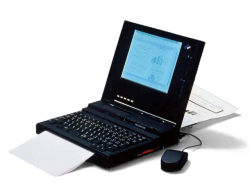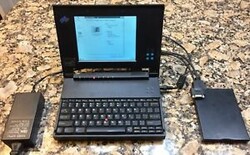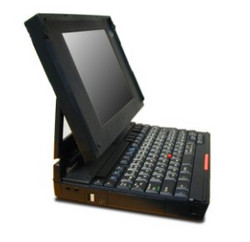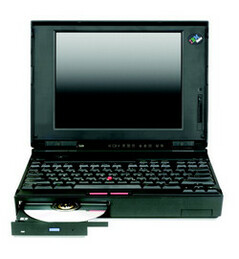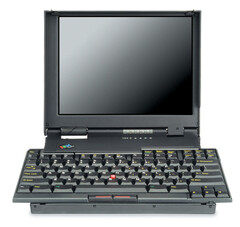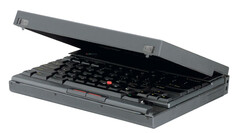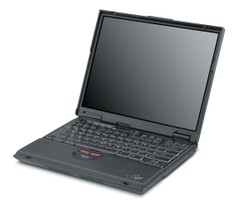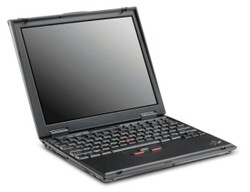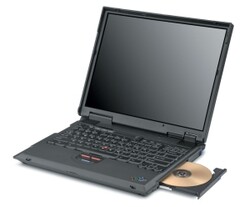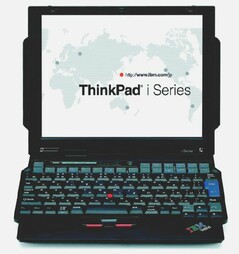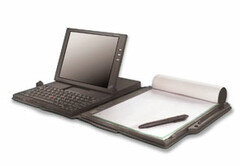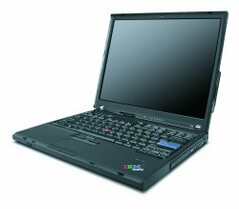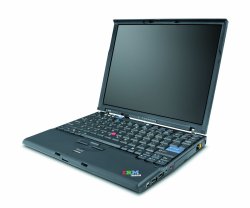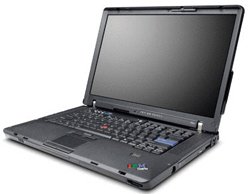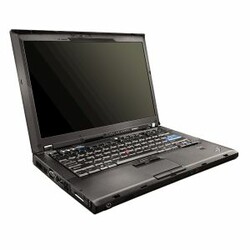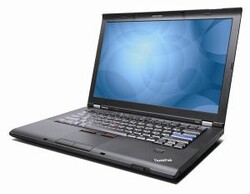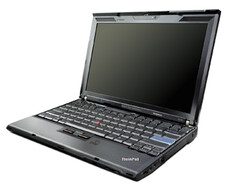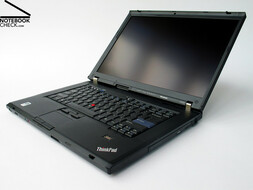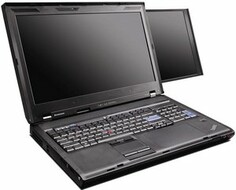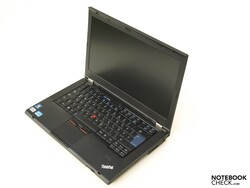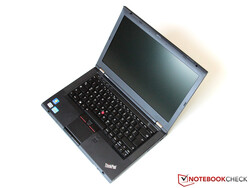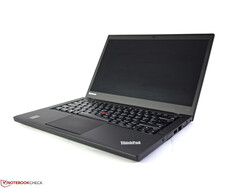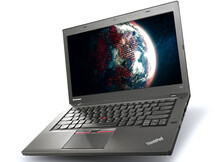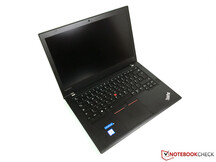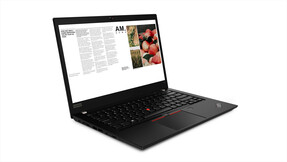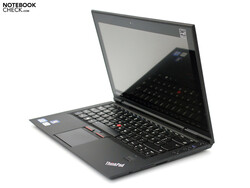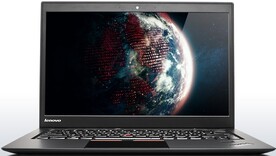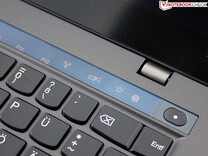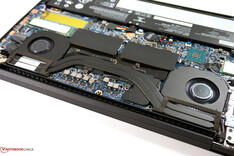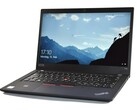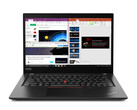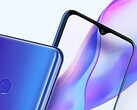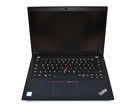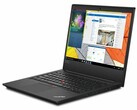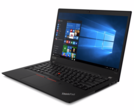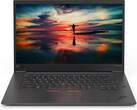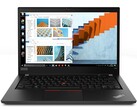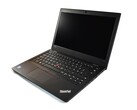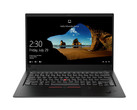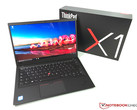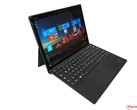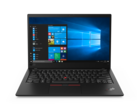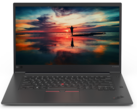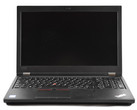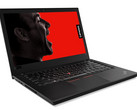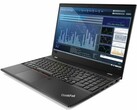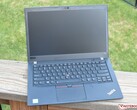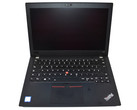Introduction
Few technology brands have risen to define an entire device category, but the ThinkPad line is almost synonymous with the term "business laptop." Since its creation under IBM in 1992, the ThinkPad brand has been widely regarded as the absolute best in the world of mobile business computers, and for good reason. In this feature, we will explore some notable ThinkPad devices that have graced many a businessperson's bag over the years.
In the beginning: 1992 - 2000
The "ThinkPad" name comes from a slogan coined by IBM employees back in the 1920s. The word "THINK" adorned early IBM mainframes and eventually made its way onto pocket-sized paper notepads. From this, the ThinkPad brand was born.
The first device released under the ThinkPad moniker wasn't a traditional laptop. Rather, the 700T (announced in April of 1992) was a tablet PC powered by an Intel 386SX/20 CPU, 4 or 8 MB of RAM, and two 10 MB solid state file storage drives. The tablet featured a 10-inch monochrome STN display with a resolution of 640x480.
Eventually released to the public in October 1992, the ThinkPad 700T was an overall flop and soon disappeared from the market altogether, but it did pave the way for one of the biggest successes in IBM history: the ThinkPad 700C. Featuring a (for the time) large 10.4-inch TFT full-color display, the 700C stood head and shoulders above the competition. Most other laptops at the time had monochrome screens attached to ugly and bulky shells. Wrapped in a sleek black shell, the ThinkPad 700C was critically and commercially praised and soon became the envy of boardroom executives.
Aside from the display, the 700C had another feature that drew attention: the TrackPoint. The tiny nub offered a built-in method for controlling the mouse cursor in the relatively new Windows GUI. The 700C wasn't the first laptop to offer a TrackPoint-style input device, but it was the best up to that time. The 700C offered everything a businessperson could want - a big color display, an excellent keyboard, and a good built-in mouse controller - in a comparatively small and attractive package.
Needless to say, the 700C was a massive success. IBM knew it had a hit on its hands, and the floodgates were thrown open. Over the next eight years, IBM used the ThinkPad name to bring several innovations to the business-laptop market. Some of these stuck while others were so gimmicky that they quickly faded into memory.
Other early ThinkPads
The ThinkPad 550BJ, released in 1993, incorporated a Canon bubble-jet printer into its chassis. While somewhat convenient, the 550BJ was rather unreliable and quite a bit bulkier than other laptops on the market. The 550BJ saw a limited release run in Japanese markets but never saw a successor.
The IBM ThinkPad 500 (released June 1993) shrunk the ThinkPad package even further. Marketed as a subnotebook, the ThinkPad 500 was a small laptop that made some compromises in its quest for compactness. The 500 featured a 7.24-inch monochrome STN display with a 480x640 resolution. While smaller than the 700C, the ThinkPad 500 did offer a faster processor (IBM 486 SLC 2 @ 50 MHz vs. the 700C's IBM 486 SLC @25 MHz) and similar RAM and storage space (4 MB and up to 170 MB vs. 4 or 8 MB and up to 120 MB, respectively).
The ThinkPad 750P could be considered an early ancestor of the modern Yoga line from Lenovo. The 750P featured a 9.5-inch STN display with a pressure-sensitive touch panel. The display could be used with a stylus for rudimentary touch input, but the form factor was similar to that of the Dell XPS 12 or Sony Vaio Z Flip. This design was refined with the ThinkPad 360P, which offered an improved 9.5-inch DSTN panel housed in a rotating display case. While both models are incredibly thick by today's standards, they nonetheless were quite revolutionary for their time.
The ThinkPad 755CD brought integrated CD-ROM drives to the ThinkPad line. While offering only iterative improvements in other features over older models, the 755CD's optical drive would remain a staple of mainline flagship ThinkPad devices until the ThinkPad T440 removed the drive in 2013.
Lastly, we will mention the ThinkPad 701C. The "Butterfly ThinkPad," as it has come to be known, is held in high regard for its beautifully designed keyboard mechanism. The internal keyboard is separated into two halves. When the laptop's lid is opened, these halves swivel together to create an oversized keyboard that overhangs the sides of the case. The 701C has achieved such renown that a unit was included in an industrial design collection at the Museum of Modern Art in New York City.
There were far too many ThinkPad models released between 1992 and 1999 to discuss here (118, by our count), but suffice it to say that IBM hit a home run with the 700C and continued to score year after year. ThinkPads quickly grew to become the de facto business laptops. However, IBM would soon find itself striking out.
What goes up...: 2000 - 2006
At the turn of the century, IBM was on top of the business-laptop world. While the 90s saw the introduction and evolution of the ThinkPad line, the early 2000s were marked by device stagnation. IBM codified the ThinkPad model name scheme that we know today, but a lack of innovation and some questionable design choices left the company in a difficult situation.
The early aughts did see a few successes. The ThinkPad T-series debuted with the ThinkPad T20 in May of 2000. Marketed as a minimal-compromise "thin-and-light" business laptop, the T20 crammed Pentium III power into a reasonably compact case. IBM shrunk the ThinkPad package even further with the X20 later that year, albeit while sacrificing a bit on the CPU clock speed and other specifications. Users that needed more power could look to the ThinkPad A20p, a monster powered by a 750 MHz Pentium III, an ATI Rage mobility 128 GPU with 16 MB of VRAM, and a generous 15-inch 1400x1050 TFT display.
Each of these would spawn their own successors. The T-series continued to be a general-purpose "jack of all trades" business line. The X-series was marketed to road warriors in need of an easily luggable machine, and the A-series was billed as a desktop replacement. The next year saw the introduction of the R-series with the ThinkPad R30, a budget-friendly ThinkPad that could be thought of as an ancestor of the current L-series. There were also a few outliers, like the ThinkPad S30 that was sold only in Asian markets.
Each year saw iterative improvements in each line with nothing standing out. ThinkPads were starting to stagnate, so IBM attempted to market new ideas that ultimately fell short. Perhaps the most notorious of these is the ThinkPad TransNote, a notebook computer embedded into a literal notebook. Comprised of a padfolio with a full computer in one side and a paper notepad on the other, the TransNote was too much of a niche product and ultimately failed.
IBM sadly couldn't keep the train on the tracks. 2004 marked a billion-dollar loss for the company's computer sales division, and IBM decided to sell its PC and laptop lines to Lenovo. The deal was finalized in May of 2005, and Lenovo took to the ground running.
The ThinkPad T60 exploded onto the market in January of 2006 and breathed new life into the ThinkPad lineup. The transition to Lenovo was almost unnoticeable: The T60 retained many of the tried-and-true ThinkPad design choices. However, the T60 introduced something that was revolutionizing the computer world - multi-core processors.
The T60 was the first ThinkPad to use Intel's Core Duo and Core 2 Duo dual-core processors. The T60 also marked the first use of the magnesium-alloy roll cage that came to define ThinkPad build quality, a 3G modem, and more. The T60 is still held in high regard by computer enthusiasts and is seen by many as the last true ThinkPad, mainly due to its design language, build quality, and 4:3 aspect ratio display. There is still a large community dedicated to the T60, and the machine has been well-supported by enthusiasts in the Linux community.
Under Lenovo's direction, the ThinkPad line would once again rise and dominate the business market.
From the ashes: 2007 - 2019
The T60 did extremely well in the market and helped the ThinkPad line recover from the wounds it suffered over the previous half-decade. Lenovo capitalized on the T60's success with the well-received ThinkPad X60 (a compact dual-core ThinkPad), the ThinkPad T60p (a performance-oriented T60), and the powerful ThinkPad Z61p. 2007 saw continued profit with the ThinkPad T61, ThinkPad X61, and others.
The next year saw a shift in direction for the ThinkPad line. The lauded T60/T61 morphed into the ThinkPad T400. Unlike the T61, the T400 was only available with a 16:10 widescreen display. While most laptops on the market at this point were shifting to widescreen displays, many ThinkPad fans hoped their beloved business laptop would hold on to the older 4:3 aspect ratio. Thus, the T400 created some controversy among the ThinkPad crowd; some saw the shift in design as a step forward, while others decried Lenovo's decision as anathema. Either way, widescreen was here to stay.
Widescreen-only display options came to the X-series as well with the ThinkPad X200. In the latter half of 2008, Lenovo also introduced the ThinkPad W500 and ThinkPad W700. The W-series denoted workstation-level notebooks, and both laptops packed serious power. The W700, in particular, could be configured with a quad-core Intel Core 2 Extreme QX9300 and an Nvidia Quadro FX 3700M with a full gigabyte of video memory. The W700 would receive an update some months later that added a built-in second 10.6-inch 768x1280 TFT display, dubbed the W700DS (for dual-screen).
2009 saw only a handful of ThinkPad devices but was an important year for the line nonetheless. The ThinkPad T400s debuted in June of that year, attempting to marry the compact size of the X-series with the all-around usability of the T-series. The T4XXs line is still one of the most popular ThinkPad lines available today.
The modern ThinkPad takes form
The ThinkPad T400 defined the basic formula for the modern ThinkPad. This design has slowly been refined year after year to the svelte, sleek ThinkPads that we know and love today, but there were a few bumps along the road. The ThinkPad T410 (2010) and ThinkPad T420 (2011) remained largely unchanged, but the ThinkPad T430 and T430s brought another controversial change. The beveled keyboard, long held to be one of (if not the) best in the entire laptop world was swapped out for a modern "chiclet-style" keyboard popularized by Apple's MacBook laptops. While the new keyboard was still excellent and received praise from critics and users alike, there was a sizeable (and very vocal) group that abhorred the shift and cried foul. This change trickled down to Lenovo's other lines that year, including the ThinkPad X230, W530, and others.
Lenovo misstepped again the following year with the ThinkPad T440 and T440s. Fall 2013's ThinkPads got rid of the dedicated mouse buttons above and below the touchpad, instead opting for a clunky ClickPad. This ClickPad was almost universally hated by ThinkPad users as Lenovo designed it with a click mechanism along the top and bottom of the pad. The thought was to shift to a modern ClickPad while still allowing for the use of the TrackPoint. The idea failed, and the T440, W540, and X240 are largely maligned by most ThinkPad fans.
Lenovo listened to the outcry this time and brought back the dedicated mouse buttons on 2015's T450. However, the buttons that once sat below the touchpad have yet to return. Otherwise, the ThinkPad design has largely stayed the same with minor changes. It should be noted that Lenovo has slowly shifted the ThinkPad line toward the conventions followed by the rest of the laptop world: Newer ThinkPads are getting slimmer and lighter at the expense of port selection, expandability, repairability, and loss of features such as an easily removable battery or upgradeable RAM.
A new challenger approaches: X1 series
Lastly, we must mention the X1 series. Introduced in 2011, the ThinkPad X1 was Lenovo's answer to thin-and-light Ultrabooks like the MacBook Air. While the original X1 was no doubt slim and compact, it made several compromises to cut the fat. The X1 can be credited with "popularizing" the chiclet-style keyboard that made its way into mainline ThinkPads with the T430. (To clarify, the first ThinkPad to our knowledge with a chiclet keyboard was the mediocre ThinkPad Edge 13 in early 2010.)
While the original X1 received a mixed reception, 2012's X1 Carbon was almost universally praised. The X1 Carbon brought a better 14-inch matte display with a higher resolution, better color reproduction, and a brighter backlight. The X1 Carbon, like its name suggests, featured a new carbon-fiber construction that made it lighter and sturdier than its predecessor. The 2012 X1 Carbon was an overall hit.
The next revision of the X1 Carbon, dubbed the X1 Carbon Touch, was yet another botched experiment by Lenovo. The device remained largely the same save for the unique (and gimmicky) "Adaptive Keyboard," which is a dynamic LCD screen that replaced the physical function row keys. This screen could change special keys based on what application was open and contained a capacitive touch panel for input. At its core, the Adaptive Keyboard was the MacBook Pro's Touch Bar five years early. It was not well received.
The X1 and X1 Carbon devices have seen iterative updates since 2012, culminating in 2018's excellent X1 Extreme. The X1 Extreme is billed as a creative professional's dream and an alternative to Apple's 15-inch MacBook Pro or Dell's XPS 15. The X1 Extreme received a score of 91% in our own review and was universally praised upon its release last year.
Conclusion: The future is mixed
As one of the longest-running laptop brands, the ThinkPad line has known its share of ups and downs. The future of the ThinkPad looks mixed; while Lenovo has done well by the storied business brand, the Chinese manufacturer has also experimented with new designs. That appears to be the case with this year's batch of ThinkPads, especially the T490. Under Lenovo's direction, ThinkPads have steadily trimmed down. While the increased portability is welcome for weary wanderers, a thinner chassis means fewer ports and fewer features, two things that have come to differentiate the ThinkPad from other business laptops. You can check our reviews of the T490, T490s, X290, and other new ThinkPad devices as they come out to get our opinion.
What do you think? Which ThinkPad device graced your laptop bag the longest? What are some of your favorite ThinkPad memories? Let us know in the comments below.
Until then, THINK.


 Deutsch
Deutsch English
English Español
Español Français
Français Italiano
Italiano Nederlands
Nederlands Polski
Polski Português
Português Русский
Русский Türkçe
Türkçe Svenska
Svenska Chinese
Chinese Magyar
Magyar